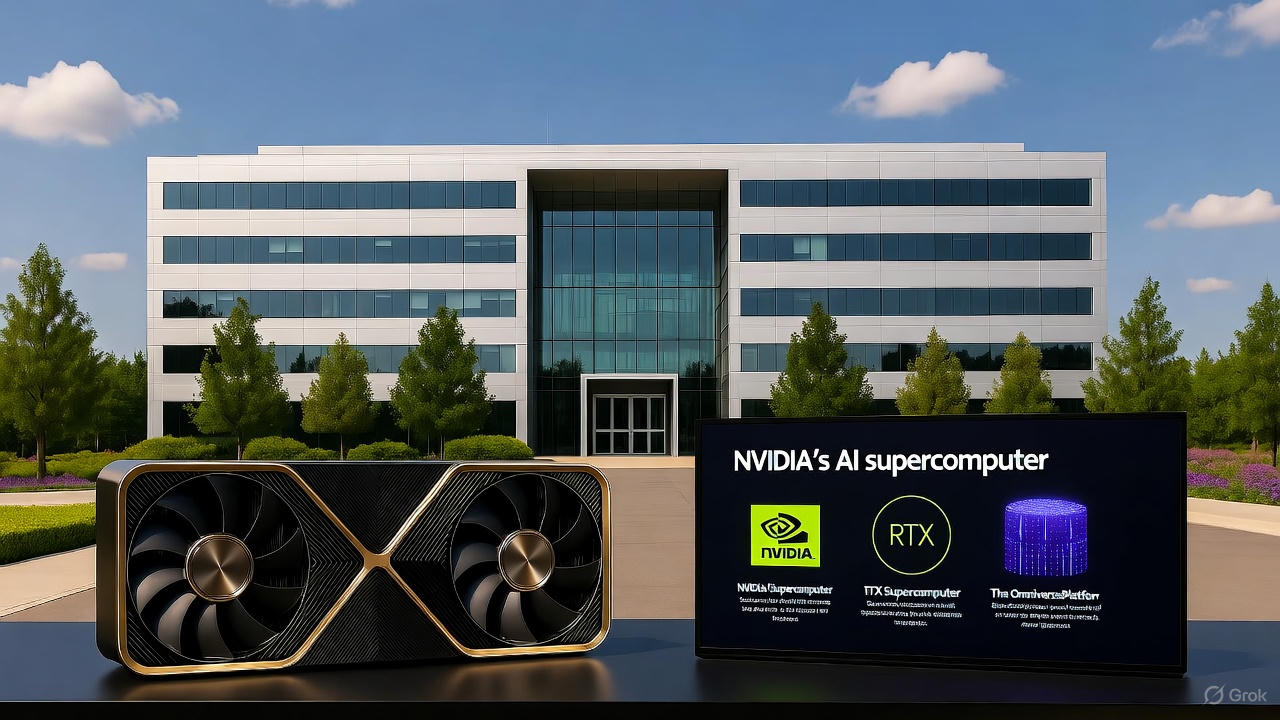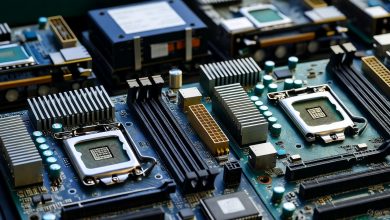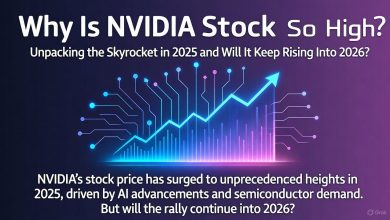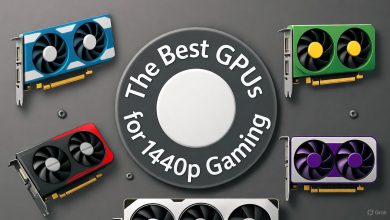As a technology powerhouse that’s reshaping the world, NVIDIA has become synonymous with cutting-edge computing. Founded in 1993, this Silicon Valley giant has evolved from a niche graphics chip maker to the world’s most valuable public company, nearing a staggering $5 trillion market valuation as of October 2025. If you’re wondering “what does NVIDIA do?” or “is NVIDIA AI-focused?”, this comprehensive guide breaks it all down. We’ll explore NVIDIA’s overview, business model, GPUs, AI dominance, technology stack, top products, and latest innovations—drawing from official sources and recent developments to give you the full picture.
Whether you’re a gamer, AI enthusiast, investor, or tech professional, understanding NVIDIA’s ecosystem is key in 2025’s AI-driven landscape. Let’s dive in.
NVIDIA Overview: From Gaming Roots to Global Tech Dominance
NVIDIA Corporation, headquartered in Santa Clara, California, is the world leader in accelerated computing. Inventing the GPU (Graphics Processing Unit) in 1999, NVIDIA sparked revolutions in PC gaming, redefined computer graphics, and ignited the AI boom. Today, under CEO Jensen Huang’s leadership, the company operates worldwide with a focus on full-stack AI systems, data center solutions, and consumer hardware.
Key milestones include:
- 1993 Founding: Started by Jensen Huang, Chris Malachowsky, and Curtis Priem to solve visual computing challenges.
- 1999 GPU Invention: The GeForce 256 transformed gaming and professional visualization.
- 2010s AI Pivot: CUDA software enabled GPUs for general-purpose computing, fueling deep learning.
- 2020s Expansion: Acquisitions like Arm (attempted) and Mellanox bolstered data center prowess, with revenue soaring from AI demand.
In 2025, NVIDIA’s market segments span gaming (25% of revenue), data centers (over 70%), automotive, and professional visualization. The company’s stock has skyrocketed, making it a darling of Wall Street, with recent announcements at GTC 2025 emphasizing U.S.-based AI infrastructure.
NVIDIA’s headquarters symbolizes its innovative spirit—a modern architectural marvel in the heart of tech innovation.

NVIDIA Headquarters | NVIDIA Newsroom
This overview sets the stage: NVIDIA isn’t just a chip company; it’s a platform provider transforming industries.
What Does NVIDIA Do? Breaking Down the NVIDIA Business Model
At its core, NVIDIA designs and sells semiconductors, but it doesn’t manufacture them—partnering with foundries like TSMC for production. The business model revolves around hardware (GPUs, CPUs) combined with software ecosystems like CUDA and NVIDIA AI Enterprise, creating “AI factories” for enterprises.
Revenue streams in 2025:
- Data Center: Dominant segment, driven by AI chips like the H100 and Blackwell series, used by hyperscalers (e.g., AWS, Google Cloud).
- Gaming: GeForce RTX cards for consumers, with features like ray tracing.
- Automotive: DRIVE platform for self-driving tech, partnering with Tesla and Mercedes.
- Professional Visualization: Quadro/RTX workstations for design pros.
- OEM and Other: Licensing IP and embedded systems.
Financially, NVIDIA reported record Q4 FY25 results, with AI demand pushing annual revenue past $100 billion. Recent investments, like a $1 billion stake in Nokia, highlight diversification into telecom for AI edge computing.
NVIDIA’s fabless model allows agility, focusing R&D on innovation while outsourcing manufacturing risks. This has positioned it as a key player in the AI arms race, with chips powering everything from ChatGPT to autonomous vehicles.
NVIDIA GPUs Explained: The Heart of High-Performance Computing
GPUs are NVIDIA’s flagship invention, parallel processors excelling at handling complex calculations far beyond traditional CPUs. Unlike CPUs, which process tasks sequentially, GPUs manage thousands of threads simultaneously—ideal for graphics, simulations, and AI.
Product lines include:
- GeForce RTX Series: For gamers and creators, featuring AI-enhanced DLSS (Deep Learning Super Sampling) for upscaling graphics.
- NVIDIA RTX Professional: Workstation GPUs for CAD, video editing, and scientific modeling.
- Data Center GPUs: Like the A100/H200, optimized for training large language models.
In 2025, the RTX 50 Series (Blackwell architecture) introduces breakthroughs in efficiency, with up to 2x performance gains in ray tracing and AI workloads. Architectures evolve: From Turing (ray tracing debut) to Ampere, Ada Lovelace, and now Blackwell, each generation integrates more Tensor Cores for AI acceleration.
Real-world applications? In gaming, RTX GPUs deliver photorealistic visuals; in science, they simulate climate models; in healthcare, they accelerate drug discovery.
Here’s a glimpse at the latest RTX 50 Series GPU, pushing boundaries in performance and design.

New GeForce RTX 50 Series Graphics Cards & Laptops Powered By …
Understanding NVIDIA GPUs is crucial—they’re not just hardware; they’re enablers of the digital age.
Is NVIDIA an AI Company? Exploring Its Leadership in Artificial Intelligence
Absolutely, NVIDIA is an AI company at heart in 2025. While roots are in graphics, the pivot to AI began with CUDA in 2006, allowing GPUs for machine learning. Today, NVIDIA powers 90% of AI training worldwide, with chips central to models like GPT-4.
Key AI initiatives:
- Tensor Cores and Frameworks: Specialized hardware for deep learning, integrated with TensorRT and PyTorch.
- NVIDIA AI Enterprise: A software suite for deploying AI in production, including models for healthcare (e.g., drug discovery) and finance (fraud detection).
- Supercomputers: Systems like DGX and Grace Hopper Superchip, combining CPU-GPU for exascale computing.
Competition from AMD and Intel exists, but NVIDIA’s ecosystem (e.g., CUDA lock-in) gives it an edge. Ethical AI is addressed through partnerships for responsible deployment, though energy consumption remains a debate.
In everyday life, NVIDIA AI enhances smartphone cameras, autonomous driving, and even virtual assistants. As Huang stated at GTC 2025, NVIDIA is building AI infrastructure to “shape the future.”
Visualize the scale with this AI supercomputer setup, a cornerstone of modern data centers.

NVIDIA Launches World’s First Deep Learning Supercomputer | NVIDIA …
NVIDIA’s AI leadership isn’t hype—it’s backed by trillions in market value and real-world impact.
NVIDIA’s Cutting-Edge Technology: Ecosystems and Architectures
NVIDIA’s technology blends hardware with software, creating seamless ecosystems. Core innovations include:
- Ray Tracing and DLSS: Real-time lighting in games and films.
- Omniverse: A platform for 3D collaboration, used in metaverse development and industrial design.
- NVLink and CUDA: High-speed interconnects and programming tools for scalable computing.
R&D investment tops $10 billion annually, focusing on quantum ties and edge AI. The Grace CPU, combined with Hopper GPUs, forms superchips for hyperscale efficiency.
Future trends? Expect integration with robotics (e.g., Project GR00T) and sustainable computing to address power demands.
Omniverse exemplifies this— a virtual world builder powering collaborative innovation.

Develop on NVIDIA Omniverse Platform | NVIDIA Developer
This tech stack makes NVIDIA indispensable for modern computing.
Top NVIDIA Products in 2025: A Comprehensive Buyer’s Guide
NVIDIA’s product lineup caters to consumers and enterprises alike. Here’s a breakdown:
| Product Category | Key Examples | Use Cases | Price Range (2025 Est.) |
|---|---|---|---|
| Consumer GPUs | GeForce RTX 5090, RTX 5080 | Gaming, content creation | $800 – $2,000 |
| Professional GPUs | NVIDIA RTX A6000 | 3D modeling, video editing | $4,000+ |
| Data Center Solutions | H200 GPU, DGX Systems | AI training, cloud computing | $30,000 – Millions |
| Automotive | DRIVE Orin | Autonomous vehicles | Integrated in vehicles |
| Software | CUDA, Omniverse Enterprise | Development tools | Free to subscription-based |
Recent releases like the Blackwell-based RTX 50 Series offer GDDR7 memory and enhanced AI cores. For buyers: Gamers choose RTX for DLSS; pros opt for certified drivers in Quadro.
The Grace Hopper Superchip stands out for AI workloads, combining ARM CPU with GPU for massive performance leaps.
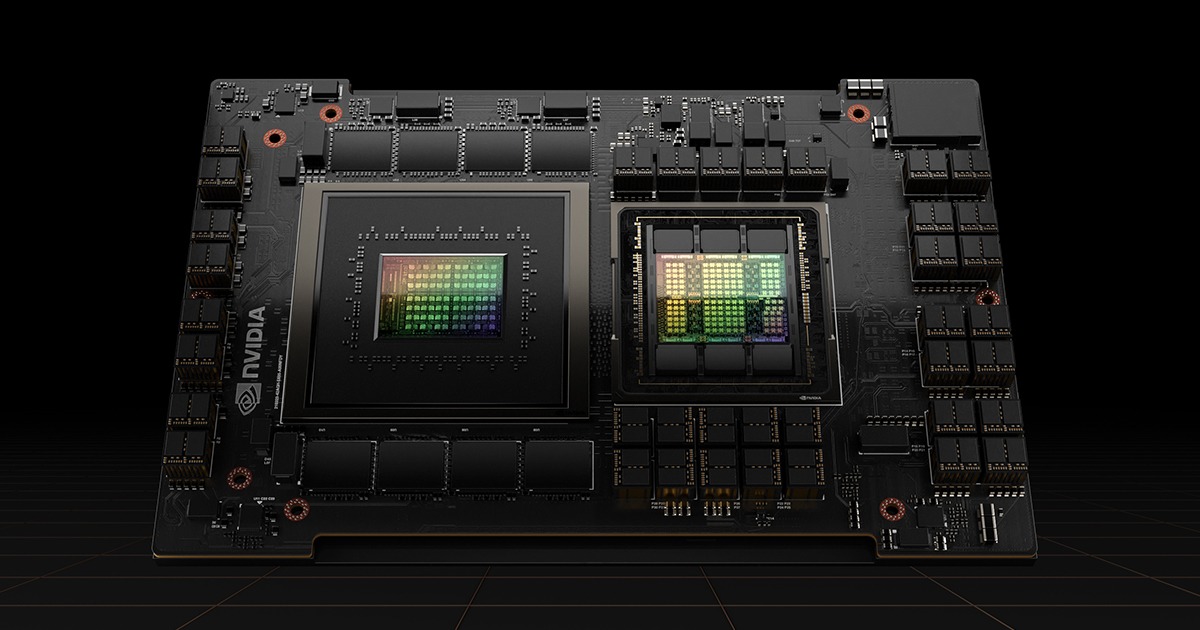
NVIDIA Grace Hopper Superchip | NVIDIA
Select based on needs—NVIDIA’s range ensures scalability.
NVIDIA’s Latest Innovations: Shaping Tomorrow’s Computing Landscape
Innovation is NVIDIA’s DNA. In 2025, highlights from the Annual Review include full-stack AI systems and data center-scale deployments. Patents in AI acceleration and quantum interfaces position it for 2030+ tech.
Impact across industries:
- Healthcare: AI for genomics and imaging.
- Robotics: Humanoid development with Jetson platforms.
- Metaverse: Omniverse for virtual economies.
Speculating ahead, 2026 could see widespread quantum-AI hybrids. NVIDIA’s U.S. manufacturing push, with chips in full production in Arizona, underscores national security in tech.
Conclusion: Why NVIDIA Matters in 2025 and Beyond
NVIDIA’s journey from graphics pioneer to AI titan exemplifies tech evolution. Whether through GPUs powering your games or AI systems driving global innovation, NVIDIA is integral to the future. As demand for accelerated computing grows, expect continued dominance.
For the latest, visit NVIDIA’s site or follow GTC events. If this guide answered “what does NVIDIA do?” or clarified its AI role, share your thoughts below!
Last updated: October 29, 2025. Data sourced from official NVIDIA documents and recent news.
